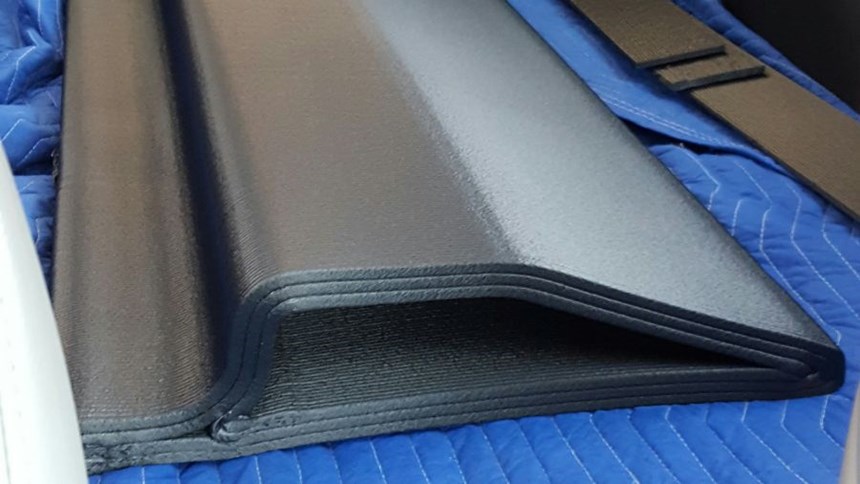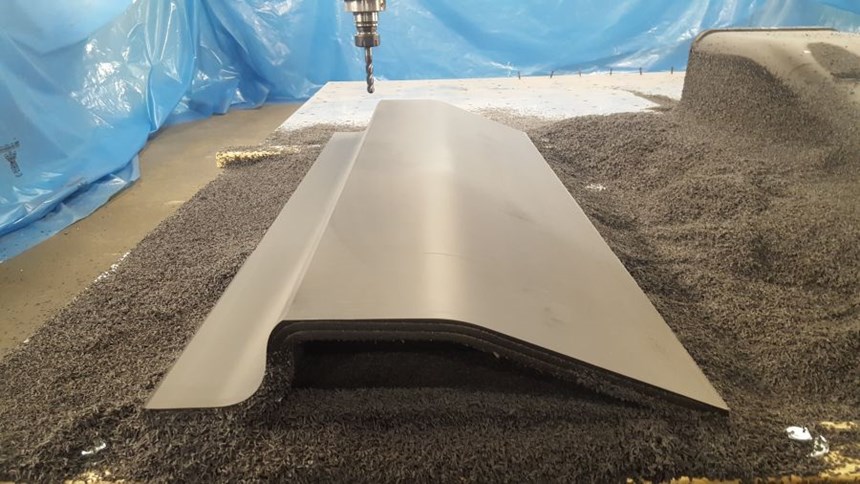From CAD File to Composite Part in 72 Hours
This Akron company focuses on large-format 3D printing for tooling, including composites layup tooling. Among the advantages are short lead times and adaptability to changes.
Share
Additive Engineering Solutions president Austin Schmidt shared with me some photos he recently took of a composites layup tool and the resulting carbon-fiber reinforced plastic (CFRP) part, both of which were produced within a window of just 72 hours. Click through the series of images above to see the tool and part. The layup tool was 3D printed on the Big Area Additive Manufacturing machine in the firm’s Akron, Ohio, facility. It was machined to final tolerance on a Quintax five-axis machining center at this company’s nearby facility in Stow, Ohio. Then, the tool went to Dayton, Ohio, for CFRP layup by NONA Composites.
The timing was not supposed to be so tight, Schmidt says. The demo tool illustrating his company’s capabilities was made for display at AeroDef. However, partway through producing the tool that had originally been intended for display at this show, a design flaw was discovered. An alternate tool was quickly designed in CAD and quickly sent into 3D printing. The company thus accidentally demonstrated two of additive manufacturing’s strengths when it comes to making tooling: responsiveness to short lead times and adaptability to engineering changes.
Schmidt, an additive manufacturing specialist formerly with Caterpillar, co-founded Additive Engineering Solutions with Andrew Bader of OGS Industries, an established manufacturing firm of which the new company is a spin-off. The company was founded specifically to produce large-format industrial tooling via 3D printing.
“Tooling” is a broad need, he says. There are various types of tools in various sectors that this machine could be used to efficiently produce. However, tooling for CFRP is a particularly promising application. Through 3D printing, the layup tool itself can be built from a material similar to that of the part it is used to make, so both tool and part have the same coefficient of thermal expansion.
Related Content
-
3D Printed Preforms Improve Strength of Composite Brackets: The Cool Parts Show Bonus
On this episode, we look at a pin bracket for the overhead bin of an airplane made in two composite versions: one with continuous fiber 3D printed reinforcements plus chopped fiber material, and one molded from chopped fiber alone.
-
Advancing Additive Manufacturing With a CATCH and Release Approach
Solutions for energy efficiency, sustainability, part repair and more are developing at Siemens’ Charlotte Advanced Technology Collaboration Hub (CATCH) in North Carolina.
-
Better, More Compact Radio Frequency Devices Through 3D Printing
3D printing technology company Fortify is applying its photopolymer process and material developed with Rogers Corporation to serve the expanding RF market.



